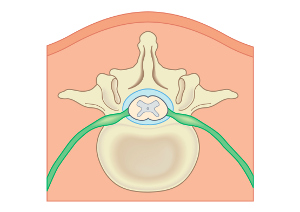What is the life expectancy for someone with spina bifida? What do studies say about it? Read on to know the answers of all of these questions and more...
 Enlarge Image
Enlarge Image
Although not a guaranteed preventive measure, consumption of high amounts of folic acid before and during a pregnancy may help prevent spina bifida.
Spina bifida is a birth defect that affects around one in every thousand births in the United States, thus, making it the second most common birth defect seen in America. When normal development is interrupted anywhere between the brain and the spinal cord, it can lead to spina bifida. This problem occurs very early in the pregnancy, generally in the fourth week following conception. Sometimes, only the bones of the spinal column do not completely develop, in which case the nerves are not affected and are normal. Such a case is known as spina bifida occulta. However, when the spinal cord does not completely form, then it leads to neurologic symptoms as the nerves are not fully developed. Such a condition is known as myelomeningocele, which is the most severe type of spina bifida.

What is Spina Bifida Life Expectancy?
A study published in 2001 tried to analyze the survival rate in children with spina bifida who were born between the years 1975 and 1979. In that group of about 118 children, 76% of the people suffering from spina bifida were alive at 20-25 years of age. The most common cause of death in the individuals that didn't survive till that age was an unrecognized problem with function of the shunt. However, one needs to understand that treatment has continued to improve since these children were born. Hence, at this time, one cannot be more specific than to say that most children born with spina bifida will survive at least into early adulthood. It is claimed that as many as 90% of the people born with spina bifida will survive into and possibly even past, their third decade of life, while others claim that some individuals may be lucky enough to live well into their late 50s and 60s and perhaps beyond. However, nothing can be said conclusively, as there haven't been any definitive recent studies regarding the life expectancy. This is the reason why no statistics exist to validate a final range of life expectancy of people suffering from spina bifida.
Common Myths About Spina Bifida
Myth → Babies born with spina bifida are stillbirths or don't survive through childhood.
Fact → The chance of a stillborn suffering from spina bifida and succumbing to it before birth is less than 5%. However, this largely depends on the probability of the child being born with other defects in the body, like a defect in the heart or elsewhere, which could increase the mortality rate.
Myth → Children born with spina bifida are always mentally retarded.
Fact → If a child is born with spina bifida and does not have hydrocephalus then he/she does not suffer from mental illnesses. Factors such as a shunt infection or an episode of respiratory arrest may affect the child's IQ. However, the average IQ of a child with spina bifida is around 80-85. This is the low normal range. However, most children with spina bifida have learning problems and mostly require to be put in schools that impart special education.
Myth → The location of spina bifida along the length of the spine will determine the life expectancy.
Fact → The location of spina bifida does not influence the life expectancy, it only dictates how much paralysis there will be in the legs and feet. The higher up the spina bifida starts in the spinal cord, the greater will be the degree of paralysis.
Myth → If a child has spina bifida and hydrocephalus, then the prognosis can be worse.
Fact → Most children that are born with spina bifida may develop hydrocephalus, either during the pregnancy or soon after the spina bifida defect is closed after birth. The only difference is that most children with hydrocephalus will require treatment with a shunt. Thus, the presence or absence of hydrocephalus does not affect the life expectancy.
Although no one can say for sure a final age for the exact life expectancy of a person suffering from spina bifida, the fact is that the figures are always an average estimate taking into consideration the entire population. Hence, it is best to be positive and try to live life to the fullest, however long or short it may be. Take Care!
Disclaimer: This Buzzle article is for informative purposes only and does not, in any way, intend to replace the advice of a medical expert.


 Enlarge Image
Although not a guaranteed preventive measure, consumption of high amounts of folic acid before and during a pregnancy may help prevent spina bifida.
Enlarge Image
Although not a guaranteed preventive measure, consumption of high amounts of folic acid before and during a pregnancy may help prevent spina bifida.